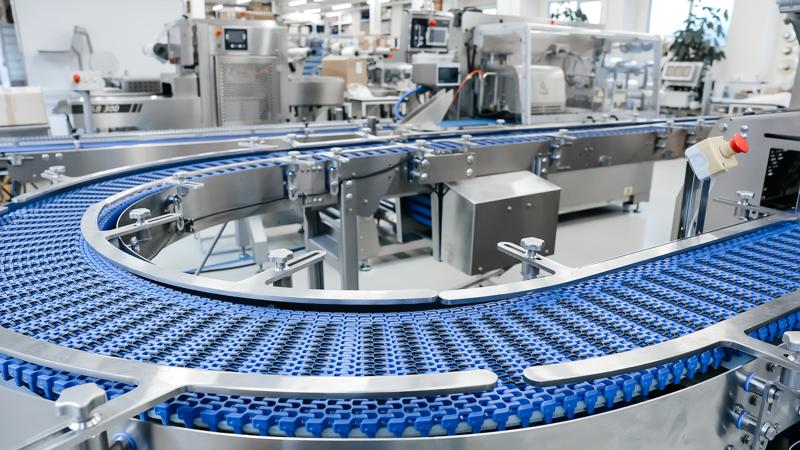Optimizing Restaurant Operations: A Comparative Overview of Leading Management Software Solutions
Restaurant accounting software is designed to simplify the financial management of your restaurant, so you can focus on serving delicious meals to your customers.
In the dynamic and demanding world of restaurant management, selecting the right software can make all the difference. From ensuring seamless operations to managing finances with precision, the choice of software impacts every facet of the business. In this overview, we delve into the functionalities, advantages, and limitations of several leading restaurant management software solutions: Restaurant365, TouchBistro, QuickBooks, KitchenSync, and Plate IQ. Each of these platforms offers unique features tailored to the specific needs of the restaurant industry, aiming to streamline operations, enhance efficiency, and foster growth.

Restaurant365
Designed with the specific needs of restaurant owners in mind, Restaurant365 is a cloud-based application offering a broad range of functionalities to streamline restaurant management:
- Comprehensive Restaurant Accounting: Integrates seamlessly with payroll services, point-of-sale (POS) systems, banking institutions, and suppliers. It consolidates accounts payable into one platform, enabling automated billing and collection processes for franchisees.
- Efficient Inventory Management: Facilitates inventory control through digital tracking, invoice linking, and intelligent ordering, ensuring optimal stock levels.
- Labor and Schedule Coordination: Allows for the creation and management of employee schedules while fostering communication. This functionality also includes task tracking for employees and access to essential daily sales figures.
- Payroll and Human Resources: Incorporates payroll processing and a sophisticated applicant tracking system to identify and onboard the most qualified candidates, offering a significant advantage with its integrated payroll capability.
- Enhanced Reporting Tools: Provides a suite of reporting options, including financial summaries, operational analytics for immediate decision-making, comparisons of actual versus projected food costs, and comprehensive analytics and dashboard views for restaurants.
Pros:
- Accessible from anywhere due to its cloud-based nature
- Comprehensive integration options and API support
- Immediate access to financial reports in real time
- Simple and straightforward user configuration process
- Excellent resources available through the support center and learning academy
Cons:
- System updates are deployed unexpectedly, without prior notice
- Introduction of new features often comes with bugs
- Managing security settings can be challenging, with options often being too restrictive or too lenient
TouchBistro
TouchBistro is designed as a specialized POS software application that serves as the nerve center for monitoring all cash transactions within a restaurant. It not only compiles daily financial summaries but also generates approximately 50 different accounting reports and financial analyses, pinpointing the items that yield the highest profit margins. The POS system is equipped with features aimed at enhancing the operational efficiency of the restaurant industry, including:
- Floor Plan and Table Management: Offers the ability to customize the restaurant layout according to table spacing, seating duration, and the average expenditure per table.
- Menu Management: Facilitates both on-site and off-premises order management, allowing for menu creation and adjustments from any location.
- Reporting and Analytics: Generates more than 50 distinct reports for a thorough examination of sales patterns and employee performance metrics.
- Inventory Management: Provides insights into food cost management, waste reduction strategies, and alerts for when inventory levels are depleting.
- Table-side Ordering: Enables mobile ordering directly from the table to the kitchen, streamlining the order placement process.
- Staff Management: Assists in overseeing staff operations, tracking shift schedules, simplifying the payroll process, and minimizing labor expenses.
Pros:
- Highly valuable recipe-costing functionality.
- Intelligent self-ordering kiosk for convenient meal upgrades at tables.
- Straightforward process for adding new menu items and adjusting prices.
- Comprehensive reporting with in-depth analysis.
- User-friendly interface for staff.
Cons:
- Processing delays with specific orders.
- Customer support does not meet expected standards.
- Remote report access app frequently unreliable.
QuickBooks:
QuickBooks stands out for its robust cost management and detailed reporting capabilities, essential for maintaining budgets and gaining insights into business performance. Its key features include:
- Expense Organization and Cost Control: Automates the management of overhead, labor, and food costs, while also categorizing and tracking expenses effortlessly.
- Labor Cost Management: Offers time-tracking and payroll functionalities, along with reports detailing labor costs for both kitchen and dining area staff.
- Bank Account Integration: Ensures business bank accounts are synced, allowing for the automatic recording, categorization, and updating of all transactions.
- Receipt Scanning: Enables the addition of receipts through photos, automatically associating them with existing expenses or creating new entries.
- Real-time Financial Statements: Generates crucial financial documents, including income statements, cash flow statements, and balance sheets, in real time.
- Customizable Sales Statements: Provides the flexibility to customize and review sales data daily, bi-weekly, or monthly.
- Report Automation: Facilitates easy sharing of reports with team members, partners, or accountants through automated emailing.
- Cash Flow Management: Offers a dashboard that presents transactions in real-time, aiding in swift and informed decision-making for the business.
Pros:
- Ability to monitor data across multiple locations.
- Financial reports are precise and detailed.
- Facilitates VAT submissions efficiently.
- Bank feed connections significantly reduce manual data entry time.
- Integrating and setting up new accounts is straightforward.
Cons:
- The inventory management feature lacks expiration date tracking and lot control for food items.
- Transitioning from the desktop version to the online platform can be challenging.
- Customizing and printing templates can be complicated.
KitchenSync
KitchenSync uniquely caters to the comprehensive payroll requirements often elusive in restaurant management software. Beyond payroll, it equips users with bookkeeping, reporting, budgeting, and cash management capabilities. Here's a breakdown of its offerings:
- Bookkeeping and Financial Management: Automates the generation of vital financial reports and ensures they're updated daily.
- Accounts Payable Management: Streamlines the process of digitizing, coding, and syncing vendor invoices, statements, and credit memos.
- Operational Analytics: Produces daily and weekly reports on performance metrics to aid in decision-making.
- Human Resources Support: Facilitates a range of HR functions including mobile self-onboarding, live support for resolving conflicts, benefits administration, hiring processes, exit interviews, and the provision of an employee handbook.
- Payroll and Scheduling Efficiency: Automates the entire process from employee clock-in to final payout, enhancing operational efficiency.
- Budgeting and Financial Planning: Offers tools for corporate finance support, financial benchmarking, variance analysis, forecasting, and budget development on demand.
Pros:
- Financial reports are refreshed daily, ensuring up-to-date information.
- Comprehensive compilation of all necessary reports for thorough insight.
- Detailed analysis of business operations to aid in strategic planning.
- Exceptional tool for managing human resources effectively.
- Wide variety of subscription options to fit different needs.
Cons:
- Certain subscription plans may be expensive, potentially impacting affordability.
Plate IQ
- Invoice Management: Streamlines the invoicing process with an intuitive workflow, showcasing detailed line-item views of invoices, directing them to the appropriate approvers, facilitating reconciliation, and enabling invoice oversight from any location via a mobile app. It also manages spending allocation efficiently.
- VendorPay: Allows for payments to over 180,000 vendors from a single platform, coupled with the benefit of earning cashback on invoice payments, making it a particularly attractive feature for an accounts payable system.
- Mobile Accessibility: Offers the convenience of processing, approving, and managing bill payments from anywhere, enhancing operational flexibility.
- Expense Management: Empowers spending oversight by providing Plate IQ cards to managers and employees, which are fully integrated and synchronized for real-time spending tracking.
- Insights and Savings: Analyzes invoices to highlight potential savings opportunities, aiding in cost reduction.
- Duplicate Invoice Detection: Automatically identifies and alerts users to any duplicate invoices, preventing payment errors.
Pros:
- Efficiently manages operations across multiple locations.
- Directly maps invoices to General Ledger (GL) accounts for streamlined accounting.
- Provides updates in real-time for immediate insight.
- Calculates recipe costs accurately, aiding in budget management.
- Tracks price fluctuations to assist in cost control.
Cons:
- Limited options for integration with Point of Sale (POS) systems.
- Sometimes experiences prolonged uploading times, which can delay operations.
Each of these software solutions brings a set of pros that cater to various aspects of restaurant management, from financial reporting and inventory management to payroll processing and operational analytics. However, they also come with their own set of cons, such as issues with system integration, transition challenges, and sometimes, cost considerations. The choice of software will largely depend on the specific needs, size, and scope of the restaurant's operations. It's clear that the right software can not only alleviate the daily challenges of restaurant management but also unlock new opportunities for efficiency and growth, making an informed choice crucial for success in the competitive restaurant industry.











